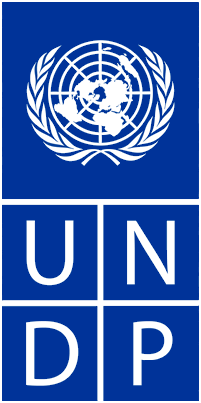Community / Land projects / Evaluation of Natural Capital to Support Land Use Planning, Improved management effectiveness of Terrestrial P
Evaluation of Natural Capital to Support Land Use Planning, Improved management effectiveness of Terrestrial P

€5344512.195
02/23 - 02/23
Завершено
This project is part of
Implementing Organisations
Donors
Data Providers
Objectives
To promote the use of National Capital Accounting (NCA) as a tool for Land Use Planning to achieve Protected Area (PA) management effectiveness, deployment of good Sustainable Land Management (SLM) practices and operationalization of Ecovillages in Central Highlands of Madagascar.
Other
Note: Disbursement data provided is cumulative and covers disbursement made by the project Agency.
Target Groups
?The project is designed to provide direct socio-economic benefits to at least 120,000 local people (at least 50% women) in the target communities living in the project sites through the greater participation of local communities in natural resources management and improved PA co-management by local people. Specifically, the socio-economic benefits will be delivered through a complex set of activities listed in the table below: Potential ways to provide socio-economic benefits to target ecovillages and surrounding areas Investment Type Potential Activities Sustainable Agriculture · Renewal of biomass through recycling to optimize organic matter decomposition and nutrient cycling; · Maintenance of soil fertility by managing organic matter and improving soil biological activity; · Minimization of water losses by improving the conservation and regeneration of soils, and water resources, and agrobiodiversity; · Erosion control measures; · Genetic diversification of the agroecosystem in time and space at field and landscape level; · Improving beneficial biological interactions and synergies between components of agricultural biodiversity, thereby promoting ecological processes and services; · Control of crop enemies (diseases, pests and weeds); · Improving the agriculture-livestock integration; and Restoration of ecosystem services in soils and forests. Non-chemical fertilizer usage Climate-resilient agricultural crops and practices Water management · Protection of sources in the protected area of ??COFAV and watershed areas that is currently being destroyed by deforestation, shifting agriculture and bush fires. This will also require, in particular improving agricultural yield in farmers to prevent intrusion into the forest that is dictated by the need to find fertile land. At the same time as this measure, it was necessary to regulate entry into the protected area and watersheds, such as social fencing of areas being restored, implement measures to prevent run-off, install non-invasive multi-story vegetation to promote infiltration, sign boarding and reduce ingress of contaminants; · Reduce water losses through the use of more water-efficient irrigation systems, better management of irrigation and maintenance of irrigation facilities, earthen dams to retain excess water and introduce cover crops. · Improvement of the soil structure by organic amendments such as manure, compost, etc.; tillage according to contour lines on gently sloping land and those that favor infiltration such as minimum tillage or zero tillage; creation of ditches, cords, etc.) along the slopes; cover crops (crop residues, mulching or mulching, etc.); choose a good stocking density for the crop; · Control of weeds; and · Installation of windbreaks. Energy management · Facilitate access to domestic energy through the dissemination of improved stoves compatible not only with fuelwood but also with charcoal, energy efficient and adapted to the needs of rural communities. · Promote the use of agricultural waste · Promote agroforestry Watersheds, grazing lands and uncultivated lands · Mulching, earthworks, hedges and canals on uncultivated lands. · Agroforestry and planting of fruit trees. · Planting of trees for energy and construction · Controlled livestock grazing with suitable forage varieties · Fish farming and rice-fish farming in water bodies · Reforestation and the presence of vegetation on uncultivated lands · Infiltration channels protected downstream by grass strips · Planting of buffer strips on stream banks · Fallowing with the use of herbaceous grasses that also improve animal feed Ponds and ponds located in the watershed as a natural buffer by storing part of the runoff water. COFAV Protected Area · Strengthen protection against all forms of external pressure such as overexploitation, land clearing, wildfires · Contribute to the implementation of the management plan by strengthening the means and capacities of stakeholders. · Promote a more inclusive approach through the participation of all the villagers living near the COFAV · Support the engagement of village communities in the protection and conservation of the integrity of COFAV: patrol activities, ecological restoration, · Improve the value of biodiversity and restore the fragmented landscape · Strengthen the economic opportunities of the surrounding villagers so that they can have more competitive activities and thus reduce their dependence on natural resources: development of natural resources (tourism, non-wood forest products, rational logging) · Improve their livelihood activities by improving their production practice so that the latter can be in harmony with the conservation of biodiversity · Strengthen communication between all stakeholders · Improvement of knowledge on Mantella cowanii (sahona mena) and the characteristic fauna of villages and their habitats · Participatory ecological monitoring · Sustainable use of non-timber forest products Improved livelihood and value addition · Identification and establishment of suitable value chains to improve economic returns on crop production systems that currently threatened sustainable land management. · Creating sustainable supply chains (i.e. creating nurseries for medicinal plant or essential oil production); · Community endeavors in biodiversity-friendly income-generating activities. · Promote private sector engagement in value chain enterprise development, marketing and business planning




